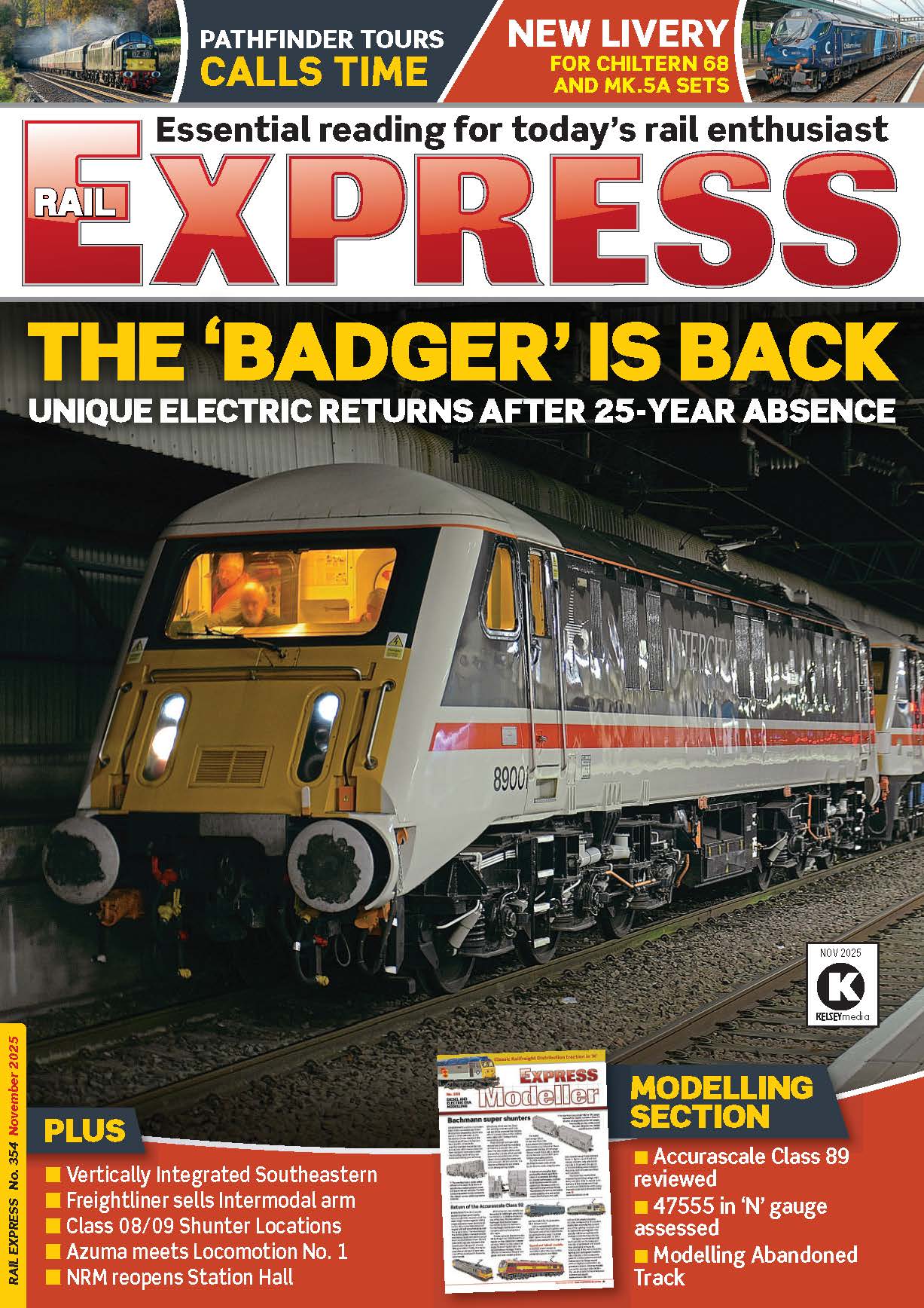High Speed Trains exported to Central America and West Africa certainly caught the attention last year. Richard Clinnick meets Robert Coleman, the Chairman of Romic Consulting Limited, the company behind these deals, and looks at the potentially interesting future awaiting HSTs (and other fleets).
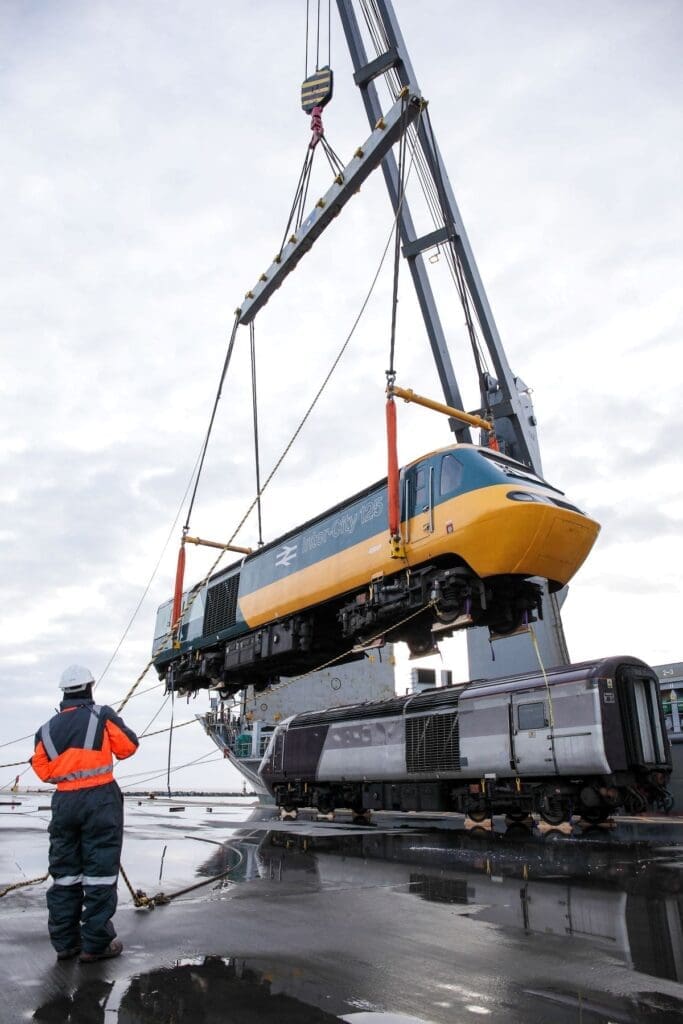
When High Speed Trains were withdrawn, en masse, following the introduction of Hitachi Class 80x fleets between 2017 and 2019, many questions were raised regarding their future.
The vast majority of the Class 43 power cars had been re-engined with MTU power units within the past decade (or so) and undergone overhauls. Likewise the Mk.3s used by Great Western Railway (GWR) and London North Eastern Railway (LNER) had received interior refurbishments in the mid-to-late 2000s, and were deemed to be in reasonable condition.
Enjoy more Rail Express Magazine reading every month.
Click here to subscribe & save.
It had already been determined that 189 Mk.3s and 54 power cars would transfer to ScotRail from GWR, but for the rest of the fleet the future was unknown. There was talk that railfreight companies could be interested but nothing came to fruition. Some of the LNER fleet gained a stay of execution when they were cascaded to East Midlands Railway (EMR) to allow the withdrawal of HSTs that were not as accessible for passengers as those moving to the Midland Main Line, but this was short-lived and the final sets were stood down in 2021.
GWR had taken the decision back in 2017 to introduce a fleet of 2+4 ‘Castle’ HSTs with the power cars overhauled and the stock modified including the fitting of sliding doors, as per the conversions planned for ScotRail. These began entering traffic in the late-2010s, and the initial order for 11 was upped to 16 to meet demand. At the same time, CrossCountry (XC) also placed an order for the modification of its fleet of 40 Mk.3s to be fitted with sliding doors. The future looked bright for these modified vehicles, and indeed the ‘43s’ that would be working with them.
As for the slam-door vehicles, more than 300 were sent for scrap after often lengthy periods in store. Some found new uses with the likes of Locomotive Services Group, while a handful have been preserved. Others have been converted into hotels, offices or are being used for training purposes by the emergency services. However, large numbers of LNER, EMR and GWR Mk.3s were disposed of, while a handful of ‘43s’ have also been scrapped.
A major change in fortunes for the HST came in late-2022 and early-2023 when the government decreed that passenger operators had to look at ways to save money. The obvious answer for many was their rolling stock policy. Despite, Rail Express understands, resistance from the operators, both GWR and XC, the decision was made to withdraw HSTs. In the former’s case this was based on their condition with around half of the fleet to be disposed of initially, eventually reduced to five sets left, while for the latter the entire fleet would be withdrawn by the end of the franchise, which was due to expire in October 2023.
The first handful of ‘Castle’ Mk.3s and ‘43s’ were withdrawn at the end of 2022, and some even went for scrap. These were power cars and coaches that had barely seen five years’ service since their modifications and refurbishments, and yet they were being stripped of parts and sent for scrap.
The GWR sets were owned by Angel Trains, First Group and Great Western and, quite early in 2023, the rolling stock leasing company (ROSCO) was advertising the availability of vehicles from all three parties on its website. The XC vehicles it owned soon also found their way to that advertisement, but Rail Express reported at the time that Porterbrook, which owned XC ‘43s’ and Mk.3s too had no plans to scrap any vehicles, although it remained coy on what was happening to its fleet.
Soon vehicles began moving to Potters Group at Ely for further storage, their future seemingly unknown.
And then, in early August 2023, three ‘43s’ and 11 slam-door Mk.3s arrived at Great Yarmouth’s Outer Harbour by road for export. They had, for the most part, moved under the radar with their arrival not really known about until they had almost all arrived at the Norfolk port. HSTs were never a regular sight in Norfolk, and yet, here were recently stood-down ex-GWR ‘Castle’ power cars and some Mk.3s that had been out of traffic for at least two years, heading abroad.
Export
The question was, where were they going? And why? Who owned them? Why those vehicles? Why not the more recently stood-down sliding door-fitted stock? Were more going? And if they could be used abroad, why couldn’t they be used here still?
The answer to that was Romic Consulting Limited who had purchased the vehicles for export to Mexico. They were shipped to Altamira, in the Tamaulipas state in the country’s Gulf Coast where they were destined for use on the Tehuantepec Isthmus Railroad. This is a system under the control of the Secretariat of the Navy and will have three lines which will carry a mixture of passenger and freight trains. Freight began running on the Z line in September 2023, with passenger traffic following from December 22, 2023. The Z line crosses the Isthmus of Tehuantepec and, initially, has one train per day in each direction, with journey times of seven-and-a-half hours. The trains run from Coatzacoalcos to Salina Cruz on a route connecting the Pacific and Atlantic Coasts.
The first vehicles left Great Yarmouth on August 10, 2023, with Nos. 43022, 43158/170 joined by Nos. 41091, 41100, 42026, 42179, 42401/402/405, 44034/061/063/094. While the power cars were former ‘Castle’ vehicles, the coaches were previously used by EMR, GWR and LNER. All were slam-door stock. They arrived in Mexico and soon gained a new livery and were put to work.
But how did they get there? The answer is Romic Consulting Limited, whose chairman Robert Coleman, says: “At the time we received the initial enquiry for the HST sets, we were very focussed on the sale of United States rolling stock to our global clients, and I am very proud of how our team responded to the engineering and logistical challenges this project presented.”
A feasibility study was conducted which showed that the MTU engines operating at lower speeds and with shorter trains would offer the new operators a reliable and cost-effective passenger train for many years to come.
Robert says: “Our focus is on providing an end-to-end service; we are not just selling locomotives and passenger coaches, and our technical teams are there to assist the new operators through a detailed handover and an ongoing supply of parts to ensure they have the technical knowledge and resources to effectively maintain the units.”
Robert’s career began at 15 when he joined the military. Speaking to Rail Express in the Romic office near Wisbech, he says that after his military career, which he says was “very successful”, he worked in trucking, including in Libya in the oil sector, but he had always wanted to get into selling. As various factors affected the oil sector in the 1980s, so he was advised to look to the rail industry. “I didn’t know anything about it but I was told the basics were the same as other industries.” His rail career began by working with US railway companies. “I hit the golden era of when Electro-Motive Diesel [General Motors] were selling its locomotives and it manufactured everything too, but a decision was made to sell the components part of the business. These were sold to management on three-year deals. The capacity was lost after those three years and I started selling parts domestically to Class 1 railroads. That is how the aftermarket business began out there.”
Building relationships was key, he says. “We were the first to have the export rights and there was no international market – it had been all GE/EMD. I came back to Europe and there was nobody interested and so it was hard work to build the business.
“But two things happened. I got a call from Iarnród Éireann (IE) and my first order in Europe – that was the domino effect. The next step was Dänische Staatsbahnen (DSB) in Denmark called me for a meeting. The Swedish and Norwegian railways were there too. There was a good size fleet here but I attended this meeting and then got a call saying we are sticking with EMD. A few days later, a senior manager from Sweden’s railways rang and said it wanted to stay solo.” Eventually, Romic was able to take 85% of business off EMD across Europe and held it for 22 years. “The UK was a world of its own,” he says. “It wasn’t Romic at that point,” he adds.
Selling components was fine, but Robert had bigger dreams. “I had a call with Belgium and was asked about locomotives for Gabon, I was told that I had been recommended as being able to help. I got five locomotives from Norfolk Southern and the president of Gabon came to see them.
“I am an entrepreneur. I could see something was possible, I had done it and I could do it again.” As he already said, relationships are everything. “All my clients become great friends.”
He went back to Europe thinking about more possibilities. “You’ve got EMD locomotives – what do you do with them? I said I would sell them abroad. The companies could rebuild them and then sell them, and I sold them out of Sweden and Denmark. We sold whatever we could get.” That, combined with changes in the African locomotive market, which had been dominated by Wabtec since the 1980s, created opportunities. EMD and GE walked away from Africa while the Chinese were moving in. This left what was now Romic as one of only two options that could meet the requirements as investment in African railways continued.
“We grew and then shrank,” he says. Romic had offices in the UK, with a staff of 27, but due to the sanctions imposed on Iran and Iraq which affected the business, the company had to downsize. A move to Singapore followed, and on Robert’s return to the UK he decided to retire, or so he thought …
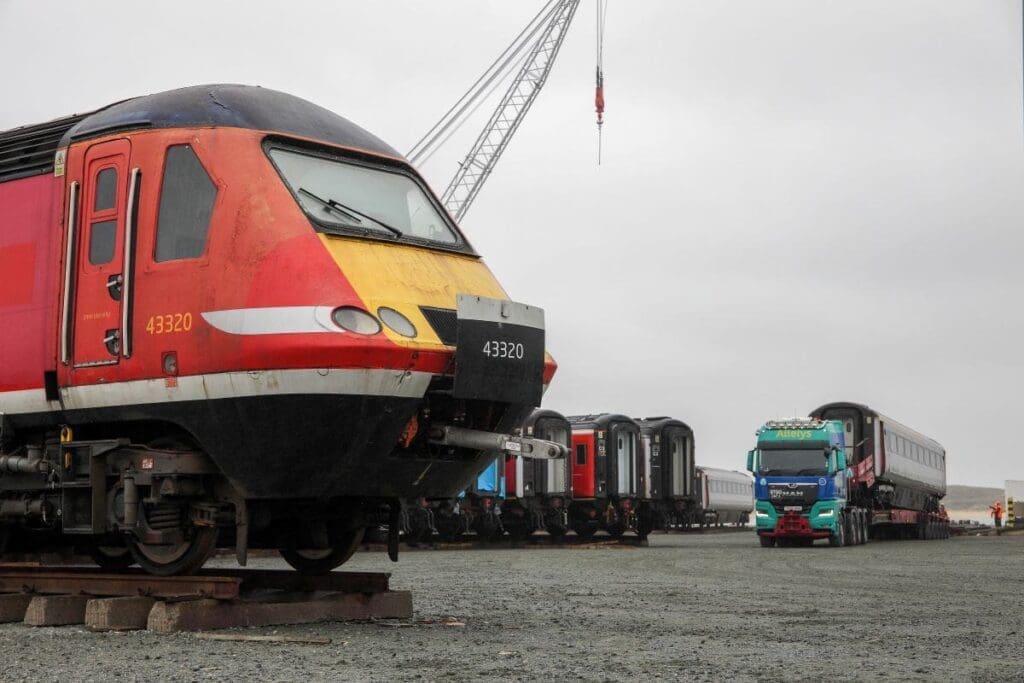
Enter the HST
“Just before Covid I was approached to set up a contract. My initial reaction was that I was not interested.” But the field was opening up. Covid had seen off a lot of the competition. “I was approached to look at HSTs. I said no – they seemed too problematic. I did homework and dug deeper and, actually, the project was feasible.
“My first instinct was to convert them to narrow gauge and they would be ideal for low-speed operation. That was my initial idea and the MTU engine is easy to maintain. The plan was just the power cars at that point.”
A deal was signed and, despite the export order, the first contracts were actually for Nigeria. Assistance was requested and, when vehicles eventually went to West Africa, Romic dispatched staff to help with training. “The plans around expansion there are about running an efficient railway,” says Robert. The initial line that they will be used on is a 17-mile extension of the Lagos Rail Mass Transit (LRMT) Red Line, but the plan is for a 435-mile line. The initial project is planned to move 500,000 passengers daily, with the expectation that this will enhance mobility and reduce traffic congestion. The trains will operate between Agbado and Oyingbo.
Eleven power cars and 11 coaches were exported to Nigeria. This allows for two five-car sets, while other ‘43s’ can haul the two rakes of Talgo stock imported to Nigeria from the US. “We know there’s a big picture and we say there’s a solution – HSTs.” There are more planned to head to Nigeria. Staff have been visiting the operator and have already used ‘43s’ there for parts to keep classmates operational. “Then, we can either use them as donors or we can replace them on the next shipment,” he explains. “There’s lots of surplus parts available but eventually HST parts will become obsolete, so we need to plan ahead.”
Meanwhile, while these discussions were ongoing, one of Robert’s contacts from Germany approached him. Again, HSTs were the topic. “I was told that someone wanted to buy them. I said that there were plenty available and was told that people wanted to come and inspect them. Within days a delegation from Mexico had arrived.”
He says that they spent three hours looking at the trains and then agreed to buy them there and then. “We spent a week with the technical discussions of the trains and then they wanted to place the order the next day!”
Initially the HSTs were to have been exported via Newport Docks but there were rail strikes and the moves were dependent on the availability of vessels. The slot was missed. Timing was of the essence he says. The shipping line suggested Great Yarmouth. Unlike Newport there is no rail connection to the harbour any more so the vehicles moved by road from Ely. The road haulier was Allelys, which introduced Romic to Eastern Rail Services, which has its base at Great Yarmouth in the former carriage sidings there, and soon a relationship was formed that today has seen a joint venture created.
Norfolk plans
After the initial vehicles moved to Yarmouth by road, the vast majority of future vehicles came by rail. Many fresh out of traffic. As XC ran down its fleet so the ‘43s’ become available. Five Porterbrook power cars (Nos. 43285, 43301/303/321/357) were leased to Colas Railfreight while the seven Angel Trains ‘43s’ were acquired for export. These included three in retro liveries, including Nos. 43007/008 which were repainted for the final few weeks in traffic and which operated the farewell charter in September 2023. Within weeks, XC Mk.3s and ‘43s’ were making their way to Great Yarmouth. The ‘43s’ were split between Mexico and Nigeria while any XC coaches exported went to Mexico earlier this year. Coaches sent to Nigeria were the former ‘Castle’ stock.

The situation around Mexico is also in the air at the moment, as a new president has been elected who was committed to maintaining the ongoing investment plans, but whether that would mean more HSTs heading to Central America was unknown. “There are vehicles earmarked but they have not been ordered yet,” says Robert.
However, HSTs are a key part of the Romic future. Working with ERS there will be sheds built at Great Yarmouth where the trains can be prepared ahead of their export. “In time we will be wrapping the ‘43s’. We will hire sheds if needed initially, before we export them, but the long-term plan is a facility at Yarmouth.”
Other work that may be undertaken at the Norfolk site in the future could include regauging vehicles prior to their departure, for example. “I’m also open to engineering capacity to look at bogie overhauls.”
“We have a hire fleet and we are expanding the fleet too, both with locomotives and stock. We are making more locomotives and stock available for hire.” This has already seen former XC coaches Nos. 42097, 42376, 44012 and 45003 moved to UK Rail Leasing, Leicester on April 5, and subsequently the Severn Valley Railway later in April, for storage ahead of their use in testing of the Midland Main Line electrification.
“Class 43s are earmarked for us at Ely and we have no space at the moment. Some ‘43s’ are for parts only and we won’t get all of them working.
“All the HSTs coming out of traffic from Angel Trains are earmarked for us.” That would mean all the ScotRail fleet and much of the remaining ‘Castle’ sets could find their way east to at least Ely, and perhaps away from these shores.
“We can hire stock to operators in this country but we cannot run a public train company. There appears to be a market for the hire of Mk.3s for test trains etc. We are advised that ‘43s’ could be useful too. This works for us as we have the asset so why not keep it warm? They will be in our livery. We can use these to fill gaps between the ships. It’s all about diversification.
“Eastern Rail Services ran a train last year using an HST. We were quite happy for that as we want them moving, so, be it a railtour or a test train, we have the stuff, its equipped with modern accessibility features and can run on the main line, so why not?
“Also, while I might have a look at what’s available, I won’t go to tender. ROSCOs invite us to participate but they have to do the right thing and make them available.” A recent look at the Romic Group website shows Transport for Wales Class 150s and former EMR Class 156s are available. It is understood, other fleets, could be made available to Romic. Robert has hinted that he would be interested in the ‘60s’ made available by DB Cargo UK which have yet to be sold.
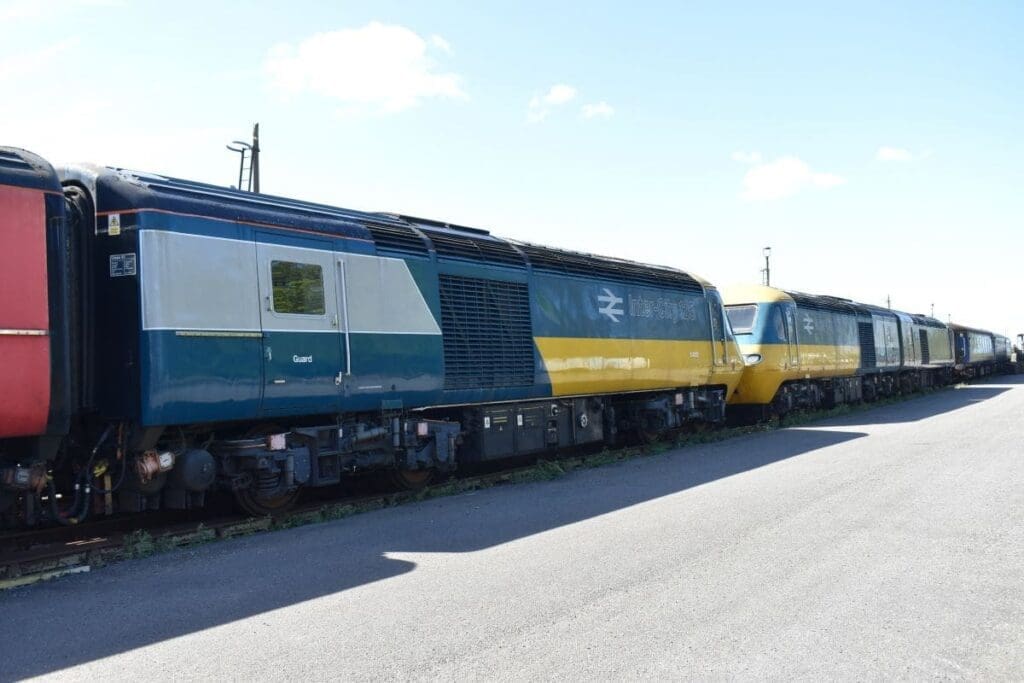
“You have to get the numbers right and this is a huge learning curve for the UK.” He has experience of exporting trains from this country before, with ‘86s’ and ‘87s’ bound for Eastern Europe. “People only see opportunities in the UK, not the world. I know the market globally.
“We want to grow the business with others who want to grow. The great thing about the UK’s rolling stock is that it’s narrow. There is stock such as ‘150s’, ‘158s’ and ‘165s’ becoming available in the future and these could be exported. We want to work with people who think outside the box. In the UK everything has to be gold standard. Our clients are not like that. They want the vehicles to be operational and we have engineers who work out the requirements needed.
“Our unique selling point (USP) is that we offer door-to-door service. We offer driver training, fault-finding, telephone support, messaging, engineers in the country…the whole package. We will put people in the country if we have to do so. We are a family business so there is no board and that means we can make the decision very quickly.”
He provides a perfect example. A ‘43’ arrived at Great Yarmouth and was sent to Mexico. “I got told there was no cable. I got a sent a picture. There were no cables – 24 cables were missing. Within 48 hours we had ordered replacements and they should have been at the airport on the Friday evening but there was a delay. That cost us. We didn’t ask to be paid. We respond quickly and my motto is ‘judge me on how I solve the problem’.
“I want customers to come to us and enjoy the way we work. We try to do the right thing.”
That attitude has worked for Romic. Its relationships mean it has access to off-lease fleets in this country that can be sold abroad. As Robert says, if people are willing to look further afield, the possibilities for this country’s stored trains are endless.
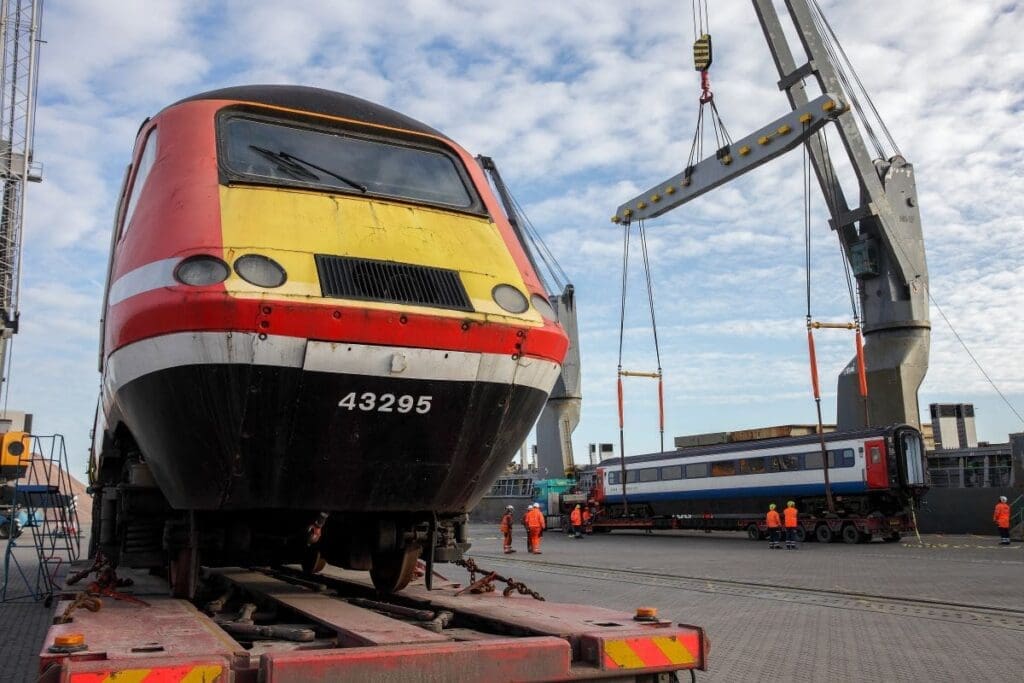

Romic vehicles, July 2024
| Exported to Mexico: | 43007/022, 43158/170, 43295, 43306/307/316/320/378 |
| Exported to Nigeria: | 43008-010/016/040, 43172/184/192, 43239, 43304/366 |
| Stored at Great Yarmouth: | 43006/027/029, 43112, 43238, 43319 |
| Mk.3s exported to Mexico: | 40750, 40902, 41026/091, 41100/193, 42026/036/052/053, 42179, 42366/373/378/380, 42401/402/405/408, 42585, 44017/034/052/061/063/072/094, 45002/005 |
| Mk.3s exported to Nigeria: | 48101/103/113/115/125/131-133, 49101/107/111 |
| Mk.3s stored at Great Yarmouth: | 41035/087, 42037/038/051, 42234/290, 42342/368/369/371/372/379, 45001/004, 48141/142, 49114 |
| Mk.3s stored at Norwich Crown Point: | 48127-129/143-148, 49110/115/117 |


